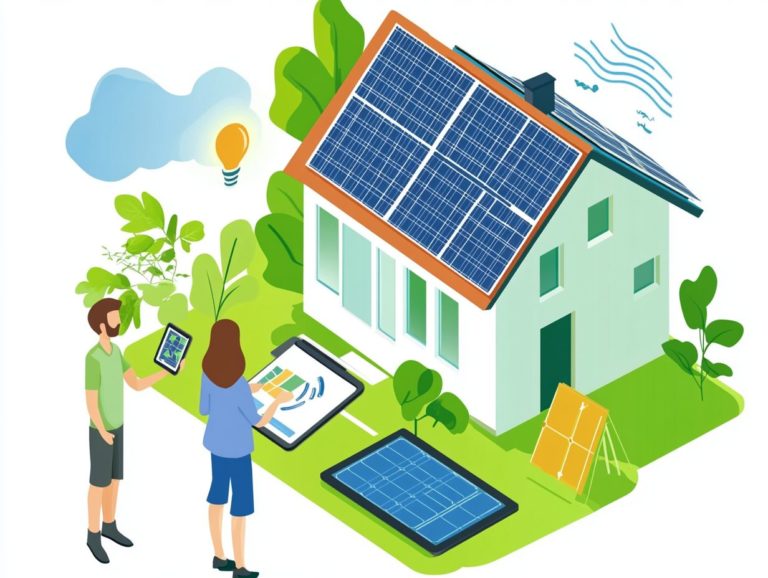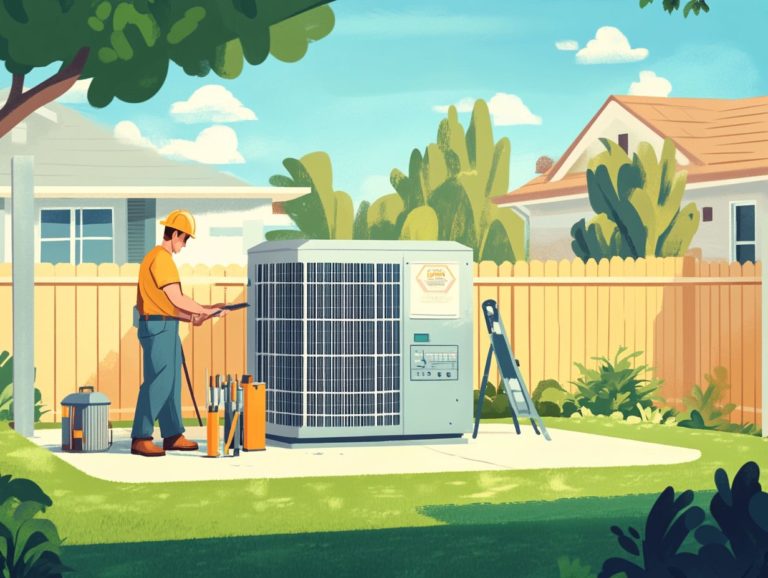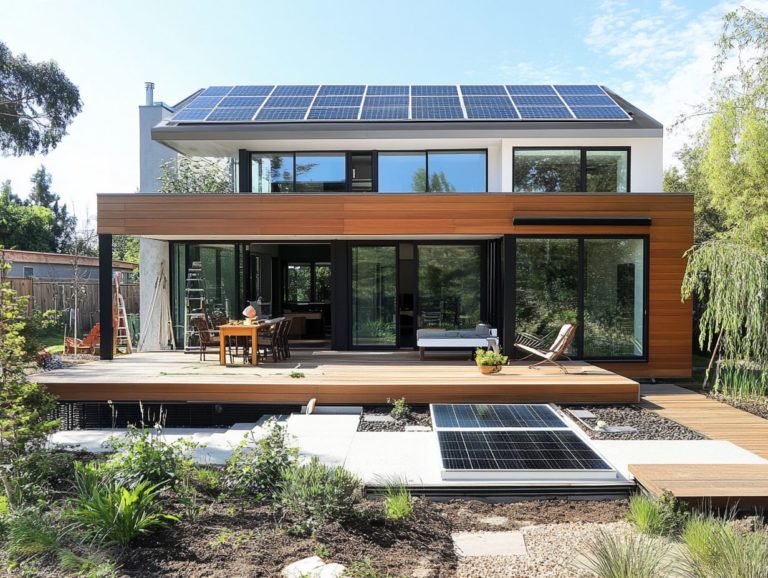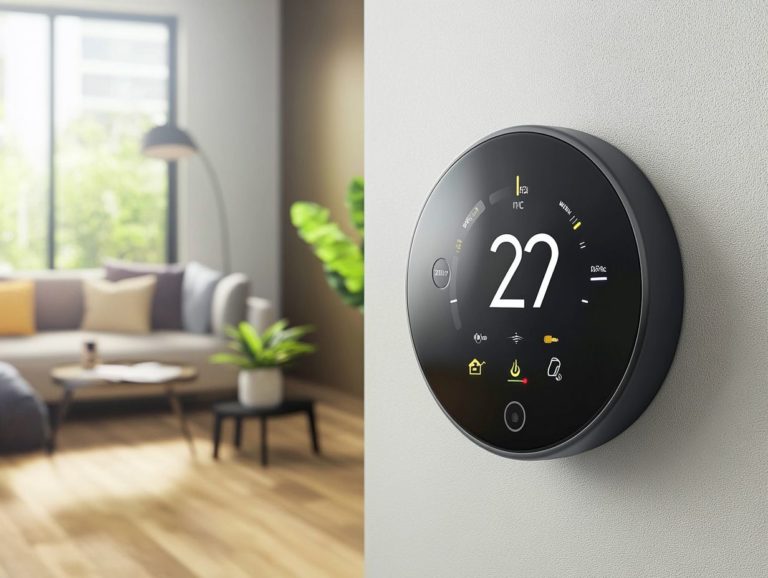What are the Requirements for Solar Installation?
Solar installation is rapidly gaining traction among homeowners. Adopting solar energy, one of the cleanest power solutions, offers a sustainable alternative to conventional energy sources.
This article explores the benefits of solar installation. Assess your energy needs and property suitability carefully before installation.
You ll find a complete guide through the installation process. This includes essential permits, equipment purchases, and maintenance tips to keep your solar panels running efficiently.
Explore how embracing solar energy can revolutionize your energy consumption!
Contents
- Key Takeaways:
- Benefits of Solar Installation
- Factors to Consider Before Installing Solar Panels
- Steps for Solar Installation
- Maintaining and Monitoring Solar Panels
- Frequently Asked Questions
- What do I need for residential solar installation?
- What are the main components needed for a solar installation?
- Are there any specific requirements for the size of the solar system?
- Do I need to meet any electrical or building codes for a solar installation?
- Can I install solar panels on any type of roof?
- Are there any financial requirements for a solar installation?
Key Takeaways:
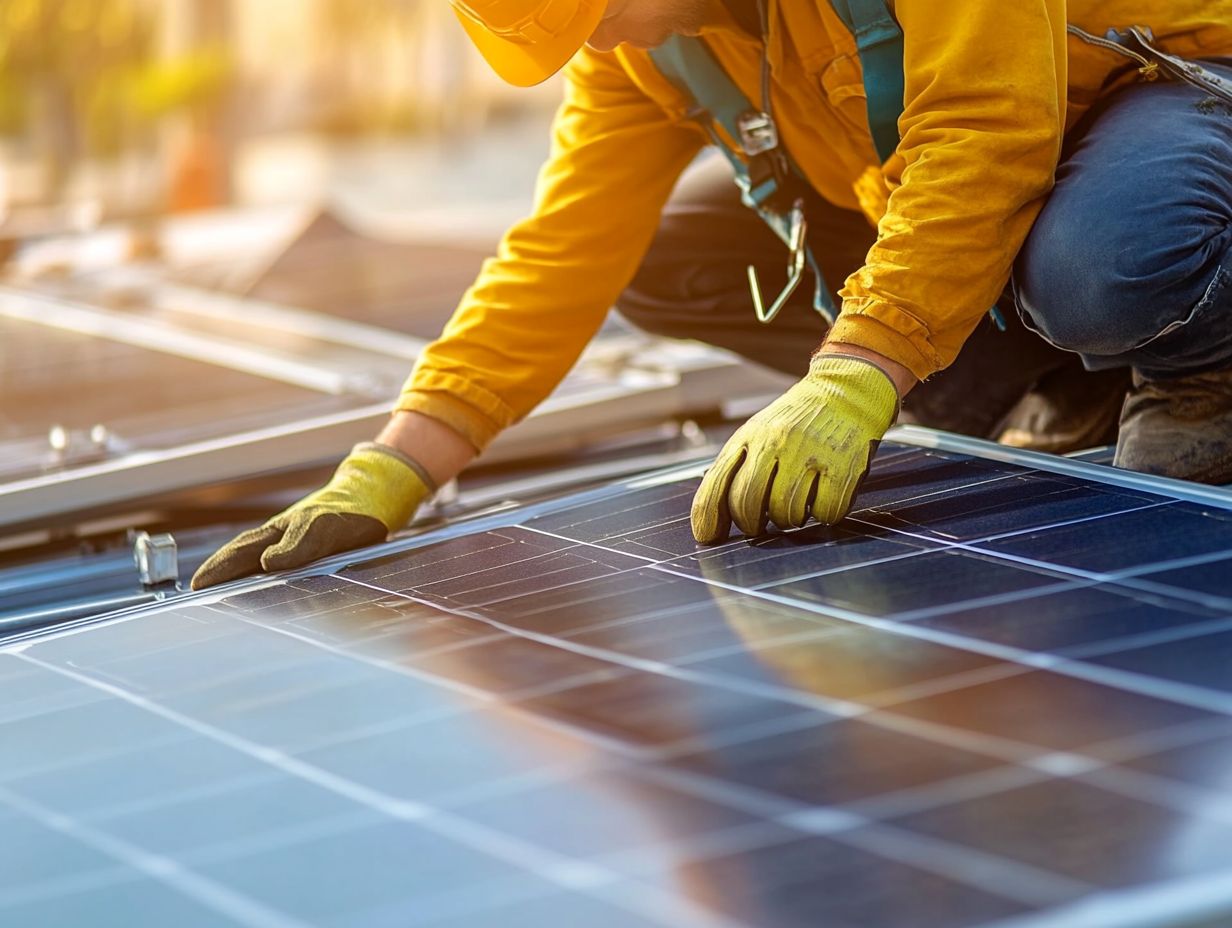
- Assess energy needs and property suitability before installing solar panels for maximum benefits and efficiency.
- Proper permits and paperwork are necessary to comply with regulations and ensure safety during solar installation.
- Maintain and monitor solar panels to maximize efficiency and longevity; following maintenance tips can help achieve this.
What is Solar Installation?
Solar installation integrates solar panels into your property, helping to harness solar energy effectively to meet your energy needs. This journey involves selecting the right roofing materials, such as asphalt shingles for their affordability and ease of installation, or standing metal roofs for excellent durability and energy savings.
As you navigate the solar energy landscape, you ll encounter key elements like roof orientation, pitch, and condition. Safety regulations are paramount, ensuring that your electrical system is compatible with solar technology to maintain its integrity.
Several components are crucial for an effective solar installation, including solar panels, inverters, and solar batteries. Roof-mounted systems are popular for residential properties due to their space-efficient design, while ground mounts offer flexibility for larger areas, allowing for optimal positioning.
Working with a certified solar installer is essential for success. Look for installers with NABCEP certification, which confirms their expertise in the latest technologies and best practices. This certification enhances both performance and the long-term reliability of your solar energy system.
A solar battery enhances the efficacy of your setup by storing excess solar energy, ensuring that your system operates effectively.
Benefits of Solar Installation
Solar installation presents a wealth of benefits that cater to both your environmental and financial aspirations as a homeowner. By transitioning to solar energy, you have the opportunity to significantly reduce your carbon footprint and actively contribute to sustainable energy practices. You can capitalize on an array of financial incentives, including the federal tax credit, which can significantly reduce your installation costs and lead to long-term savings, along with cash rebates for solar investments.
Integrating solar panels not only helps lower your electricity bills but also elevates the overall energy efficiency of your home, positioning solar as a smart and appealing investment choice.
Environmental and Financial Advantages
The environmental and financial advantages of solar installation are nothing short of remarkable. This makes it an incredibly appealing choice for you as a homeowner looking to invest in renewable energy solutions. By using solar energy, you can significantly reduce your reliance on conventional energy sources, ultimately decreasing carbon emissions and promoting sustainability.
The financial perks think reduced utility costs and attractive tax incentives only add to the appeal of solar power as a long-term investment.
Solar energy drastically lowers air pollution levels by minimizing the burning of fossil fuels. It also plays a pivotal role in mitigating the impacts of climate change. You have the potential to slash your electricity bills, with some reports indicating savings of up to 50% annually. Tax incentives like the federal tax credit can cover a significant portion of your installation costs, making solar energy far more financially accessible.
Consider case studies, such as one from California, where families that invested in solar saw net savings of around $10,000 over twenty years. This not only highlights the environmental impact of solar energy but also showcases the financial savvy associated with embracing this renewable energy source.
Factors to Consider Before Installing Solar Panels
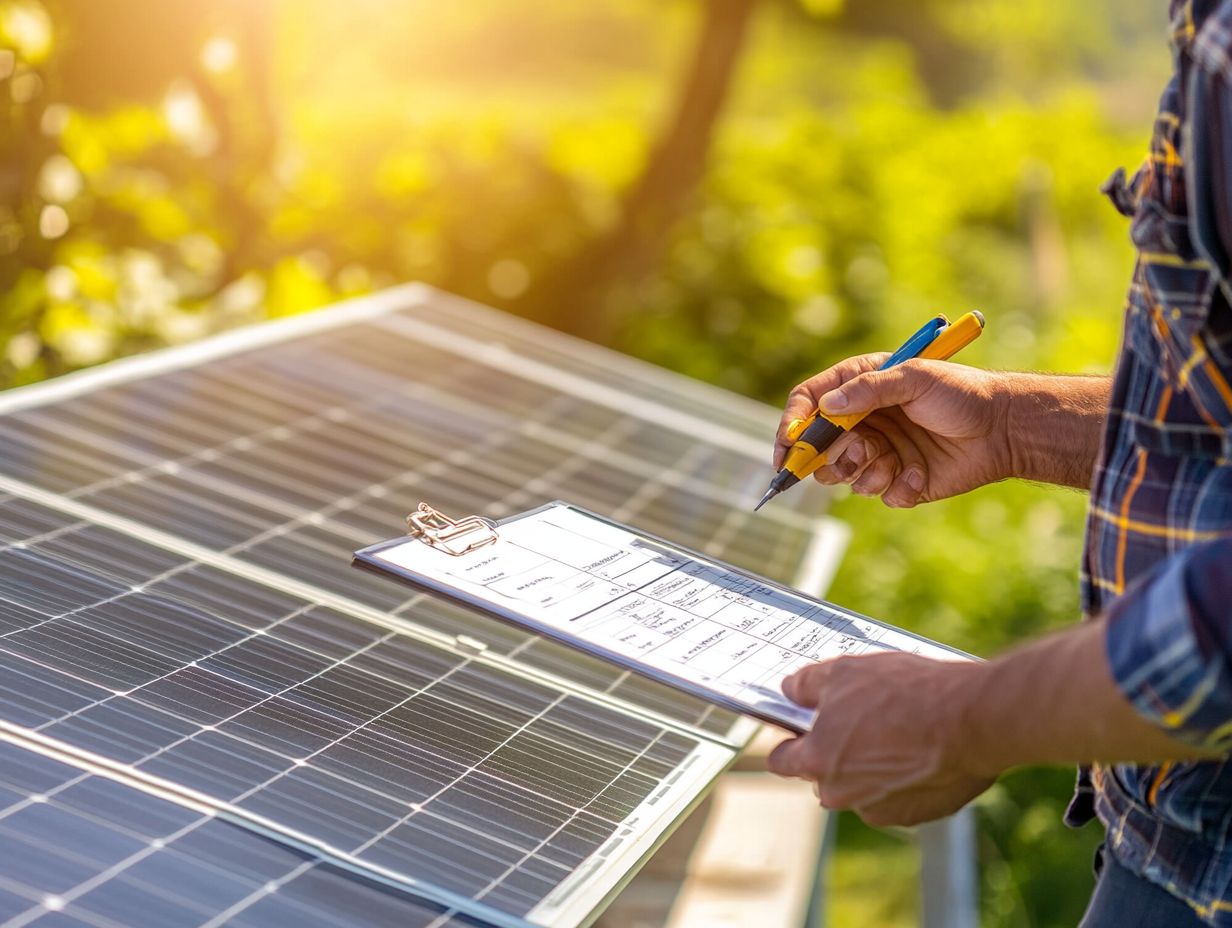
Before you embark on the journey of solar panel installation, it’s essential to contemplate several critical factors that can profoundly affect the effectiveness and efficiency of your solar power system.
Key elements include the suitability of your roofing materials think asphalt shingles versus standing metal roofs the size and condition of your roof, as well as its orientation and pitch. All of these factors play a significant role in energy production. Assessing the impact of shade around your roof is vital for maximizing solar energy collection.
Assessing Energy Needs and Property Suitability
Assessing your energy needs and property suitability is a crucial step in the solar panel installation journey. This step guarantees your solar system meets your family’s energy needs perfectly!
Evaluate your current energy usage patterns and project future needs to determine the right size for your solar panel system. This will help achieve optimal energy production. Property suitability includes important factors such as roof orientation, pitch, and local climate conditions, all of which directly influence solar efficiency.
To start, analyzing your past utility bills can provide valuable insights into your typical energy consumption and peak usage times, allowing you to establish a solid baseline. Keep in mind any anticipated changes, like a growing family or new appliances that may impact your energy needs.
The geographical orientation of your roof is critical for capturing sunlight effectively; south-facing roofs generally enjoy the most exposure. Additionally, assess your local weather conditions, as average sunlight hours will directly affect your energy generation capabilities.
By combining these calculations with a clear understanding of your personal energy demands, you can craft a customized solar solution that not only supports sustainable living but also maximizes energy efficiency.
Steps for Solar Installation
The process for installing solar panels involves a meticulously organized series of tasks designed to ensure a successful and compliant solar energy system setup. It begins with securing the necessary permits and paperwork, followed by the actual purchasing and installation of equipment.
As a homeowner, you’ll need to navigate local regulations and safety standards, which may include guidelines established by the National Electrical Code, which outlines critical safety requirements. Collaborating with experienced solar installers is essential to streamline the entire installation process.
Each step you take is vital, not only for maximizing efficiency but also for ensuring strict adherence to safety regulations.
Permits and Paperwork
Obtaining the necessary permits and completing the required paperwork is a crucial phase in your solar panel installation journey. It ensures that you comply with local safety regulations and standards.
This step involves applying for various permits governing the installation. Choosing high-quality solar equipment is essential for reliability. You must select equipment based on quality and reliability, adhering to the National Electrical Code. If you’re unsure about the process, check out this guide on how to start with solar panels. Often, you will need to submit documentation demonstrating project feasibility and safety considerations.
You ll want to collaborate closely with your chosen solar installer to navigate these bureaucratic requirements smoothly. Typically, you ll need to secure building permits to validate the structural integrity of your installation site. You ll also need agreements on how your system connects to the power grid.
Local authorities play a pivotal role in this process as they assess, approve, and oversee compliance with community standards. To streamline the permit application process, it s wise to prepare necessary documentation in advance and maintain open lines of communication with both your installer and the relevant local offices.
By adhering strictly to these safety regulations and codes, you not only prevent potential installation issues but also enhance the overall efficiency and longevity of your solar system.
Purchasing and Installing Equipment
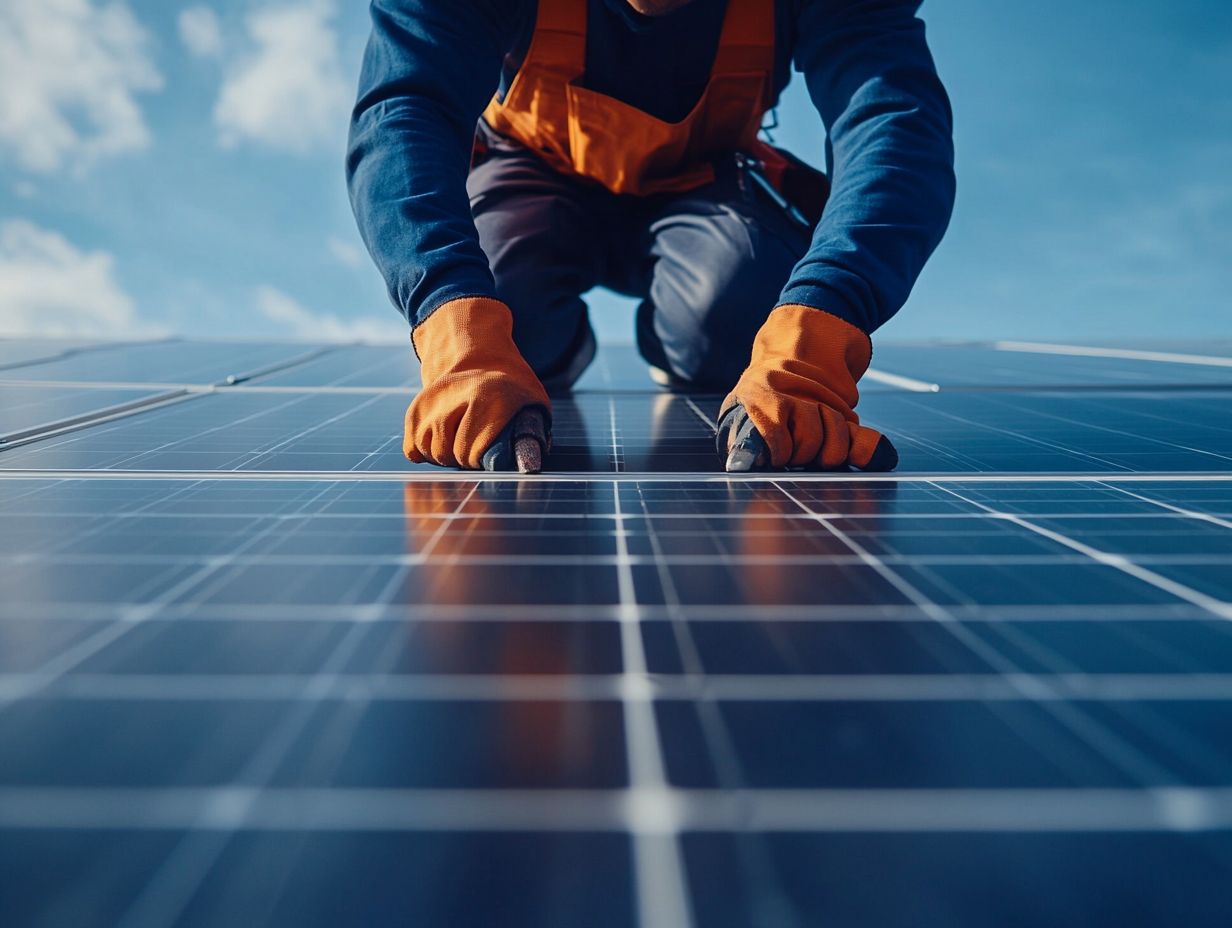
The purchasing and installation of equipment are pivotal steps in your solar panel installation journey. They significantly influence the efficiency and effectiveness of your solar power system.
You need to choose the right solar equipment, including high-quality solar panels, appropriate inverter types, and reliable racking systems. These choices ensure optimal energy production and compliance with safety standards. Collaborating with experienced solar installers can provide you with valuable insights into the best equipment choices tailored to your property s energy requirements.
To optimize performance, it s essential to understand the various types of solar panels available:
- Monocrystalline: These panels are known for their high efficiency and longevity.
- Polycrystalline: Often more affordable, these panels have lower efficiency compared to monocrystalline models.
- Thin-film: These panels are lightweight and flexible but generally less efficient than the others.
The selection of inverters is equally crucial in managing energy production effectively. You can choose from string inverters, microinverters, and power optimizers.
Choosing the right racking equipment, whether for roof-mounted or ground-mounted systems, ensures stability and easy access for maintenance. Prioritizing quality in these components is vital, not only for immediate performance but also for long-term reliability and energy savings.
Maintaining and Monitoring Solar Panels
Maintaining and monitoring your solar panels is crucial to keep your panels running at their best. This helps extend their lifespan and allows you to fully maximize the performance of your solar power system over time.
Regular tasks include cleaning the panels and inspecting for potential issues. These tasks are vital for sustaining optimal energy production.
Using performance monitoring tools helps you track your system s effectiveness and quickly identify any discrepancies in energy output.
Tips for Maximizing Efficiency and Longevity
To truly maximize the efficiency and longevity of your solar panels, taking care of maintenance and performance monitoring is essential. Simple practices like ensuring your panels receive unobstructed sunlight and regularly cleaning them can significantly boost energy production.
By utilizing tools that help you track how well your solar panels are working, you can monitor energy output and catch any potential issues before they escalate, particularly those related to solar panel installation.
Scheduling regular inspections, ideally twice a year, is crucial for identifying any wear or misalignment. Pay special attention to any shading from nearby trees or buildings; even partial shading can diminish your output. If shade is unavoidable, consider using solar panel optimizers to mitigate its effects.
Understanding shade around your roof can help you plan for better installation and orientation. In terms of cleaning, aim to do it in the early morning or late afternoon to avoid streaking or damage from temperature extremes.
By closely monitoring your performance data, you can make prompt adjustments, ensuring that your system operates at peak effectiveness. Paying attention to these details can save you money and maximize your solar investment!
Frequently Asked Questions
What do I need for residential solar installation?

The requirements for solar installation in residential PV properties vary depending on location and regulations set by the local government. Common requirements may include obtaining permits, having a suitable roof for installation, and meeting electrical system and building codes.
What are the main components needed for a solar installation?
The main components needed for a solar installation include:
- Solar panels
- An inverter
- A mounting system
- A monitoring system
- Optional: Solar batteries for energy storage
- Optional: A backup generator
Ensuring you have all the necessary installation requirements is crucial.
Are there any specific requirements for the size of the solar system?
The size of a solar system is typically determined by the energy needs of the property. However, specific requirements set by the local government or utility company, such as a maximum size limit, may affect the size of the system that can be installed.
Do I need to meet any electrical or building codes for a solar installation?
Yes, it is important to meet all applicable electrical system and building codes for a safe and compliant solar installation. These codes may include proper grounding and wiring, fire safety measures, and structural requirements for the mounting system, particularly for roof-mounted systems.
Can I install solar panels on any type of roof?
Solar panels can be installed on most types of roofs, including asphalt shingles, standing metal roofs, tile, and flat roofs. However, the condition and angle of the roof may affect the efficiency of the solar system. It is best to consult with a professional solar installer for an assessment of your roof’s suitability, considering factors like roof sizing and roof pitch.
Are there any financial requirements for a solar installation?
The cost of a solar installation may vary depending on the size and complexity of the system, as well as any additional requirements or upgrades. Financial requirements may include obtaining cash credit or applying for federal tax credits and rebates to reduce the installation costs. It is important to research and budget for these costs before beginning a solar installation.


